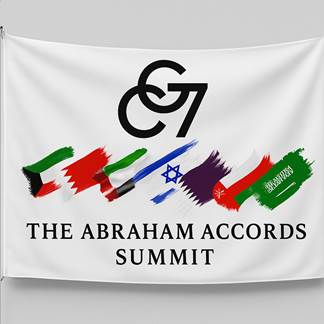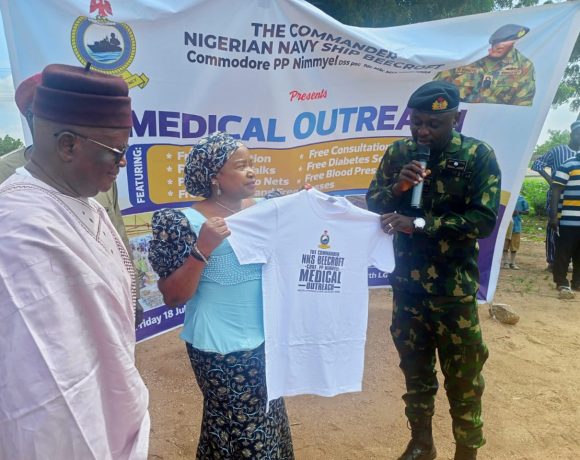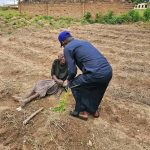The Abraham Accords Club: From Normalization Pact to Multi-Continental Strategic Economic Framework

Israel
Opinion: By Samuel Shay, Entrepreneur and Senior Economic Advisor to the Abraham Accords Treaty.
The Abraham Accords began in 2020 as a normalization initiative between Israel, the United Arab Emirates, and Bahrain, later joined by Morocco and Sudan. Within five years, they have evolved from a diplomatic framework into a regional economic club that is gradually forming a coalition for development, trade, and infrastructure connecting Asia, the Middle East, the Gulf, Africa, and Europe. The logic is clear: economic security, food security, and energy security through practical technological projects, smart financing, and cross-border cooperation. This operational model is capable of including new member states, resolving local conflicts driven by shortages of water, food, and energy, and accelerating growth using knowledge from Israel, the United States, and Europe.
1. The Abraham Accords to Date: A Genuine Platform for Action
- The Signing and Diplomatic Track: The declaration and signing in September 2020 in Washington established formal relations between Israel, the UAE, and Bahrain, later joined by Morocco and Sudan. The framework was enshrined in the Abraham Accords Declaration of the U.S. State Department.
- Regional Continuation Frameworks: The Negev Forum brought together the U.S., Israel, Egypt, the UAE, Bahrain, and Morocco, creating permanent working groups on water and food, clean energy, tourism, education, and civilian security. It is a practical mechanism for coordinating regional projects.
- Advanced Economic-Commercial Track: The Comprehensive Economic Partnership Agreement (CEPA) between Israel and the UAE cuts tariffs on about 96% of tariff lines and 99% of the value of traded goods, opens markets for services and finance, and sets a goal of expanding bilateral trade to $10 billion within five years.
- New Quadrilateral Partnerships: The I2U2 format – India, Israel, the UAE, and the U.S. – channels investments into food cell production, advanced agricultural infrastructure in India, and renewable energy projects, serving as a complementary model to the Abraham Club.
- Intercontinental Connectivity: The IMEC Corridor announced at the G20 in 2023 – linking India, Saudi Arabia, the UAE, Jordan, Israel, and the European Union – establishes a multimodal route for railways, ports, energy, and undersea fiber cables, with potential to reshape supply chains between Asia and Europe.
- Complex Realities: The Gaza war has cooled some public business ties, yet trade mechanisms and long-term infrastructure projects continue to develop, awaiting a new window of regional political stability.
2. The New Concept: A Strategic Economic Club Built on Three Pillars
Primary Objective: To include new member states as investment and implementation partners, based on three pillars:
- Economic Security: Expanding GDP and employment through scalable, practical projects, leveraging tools like CEPA, and linking them to connectivity corridors.
- Food Security: Accelerating advanced agriculture, regional food parks, and joint seed, water, and desalination development. I2U2 models provide fast investment templates.
- Energy Security: Deploying green electricity infrastructure, using natural gas as a bridge to liquid hydrogen, establishing regional transmission lines, and integrating energy storage initiatives. The Negev Forum’s energy groups provide a shared technical platform.
3. Practical Implementation: A Portfolio of Technological and Rapid-Deployment Projects
3.1 Advanced Agriculture and Food Systems
- Vertical Farming: Multi-layered urban farms, upgraded cold-chain logistics, and AI-driven irrigation and fertilizer management.
- Aquaponics and Fish Farms: Reuse of treated wastewater, supplying urban markets, and reducing pressure on marine ecosystems.
- Regional Food Parks: Inspired by I2U2 models to attract foreign capital and cross-border trade, including Israeli know-how and Emirati financing.
3.2 Water and Desalination
- Seawater and Wastewater Desalination: Regional consortia for water reuse, agricultural branding, and water-energy exchange between neighboring states.
- Water Network Digitalization: Smart sensors, GIS, and urban leakage management using Israeli and European technologies.
3.3 Clean Energy and Hydrogen
- Green Electricity Production: PV and CPP facilities near consumption centers, regional power purchase agreements, and energy storage hubs.
- Liquid Hydrogen: Leveraging regional gas reserves as a springboard for hydrogen production, fueling heavy transport and industry, and linking to the IMEC corridor for export purposes.
3.4 Transport and Connectivity
- Transcontinental Rail and Ports: Logistic synchronization between India, the Gulf, Israel, and Europe; digital customs standards; and undersea fiber and data cables.
3.5 Health and Education
- Advanced Medicine: Telemedicine, mobile imaging units, and regional laboratories for blood and diagnostic services.
- Applied Education: Technical training for facility operators, regional academies for water, energy, and logistics, and university partnerships via the Negev Forum.
4. Border-State Cooperation and Conflict Resolution
The model focuses on resolving friction caused by shortages of water, food, energy, and transportation. Joint desalination projects, regional food hubs, electricity and gas lines, and railway corridors foster positive interdependence and reduce incentives for escalation. Frameworks like the Negev Forum and I2U2 provide mechanisms for economic and civilian coordination and oversight.
5. A Unique Implementation Model: States, Monarchs, Tribes, and Communities
Unlike bureaucratic systems, implementation relies on dual layers:
- Governments and Trade Frameworks: Agreements like CEPA, regulatory harmonization, customs alignment, and unified standards.
- Community Leadership: Local kings, tribal chiefs, community heads, regional councils, and municipalities. Their field knowledge and ability to mobilize labor ensure high social feasibility.
Combining these layers streamlines procurement, land use, permits, and operations while minimizing project delays.
6. Club Economics: Capital Participation, Trade Targets, and Project Funds
- Entry Fees and Capital Contributions: Strong economies contribute primary capital; weaker nations enter via eased terms in exchange for transparency, compliance, and cooperation.
- Trade Targets: CEPA and IMEC aim to expand trade volumes, digitalize customs, and expedite port clearance. The UAE-Israel benchmarks indicate significant room for regional scaling.
- Financing Tools: Regional infrastructure funds, project bonds, mutual guarantees, blended finance with international institutions, and “resources-for-development” models in Africa.
7. Expansion Priorities: Mapping Target States
- Core Neighbors: Jordan and Egypt as logistic and energy bridges; Lebanon, Syria, and Iraq as candidates for targeted recovery in food, water, and energy. The Negev Forum allows engagement even without full diplomatic relations.
- Africa: Nations with gas, solar, and wind potential and land for advanced agriculture. Linking to IMEC and trans-African trade routes creates scale advantages.
- Wider Asia: Integrating India as an industrial anchor and massive market for equipment, processed food, and water-energy technologies. I2U2 serves as a strategic multiplier.
8. Lessons from the Past and Future Opportunities
- Tangible Progress: Signed agreements, opened embassies, tariff reductions, and creation of multi-sector working groups.
- Temporary Constraints: Security tensions disrupt visibility but economic instruments like CEPA and infrastructure deals are long-term and resume once political space stabilizes.
- The Opportunity Window: Integrating CEPA, I2U2, and IMEC under one coordinated framework builds a new supply chain India-Gulf-Israel-Europe with an accompanying African branch. Its cumulative impact is expected to accelerate once governance and operational standards in rail, ports, and energy are established.
9. Modular 36-Month Action Plan
- First 6 Months: Mapping states and regional zones, tiered project packages, accelerated licensing, and government-community memoranda of understanding.
- Months 6-18: Launching 50-100 MVP projects: compact desalination, urban vertical farms, microgrids, food parks, and training centers. Linking to funds and project loans with mutual guarantees.
- Months 18-36: Scaling to mega-projects: freight railways, hydrogen plants, regional logistics hubs, medical and educational centers, connecting to IMEC and major port junctions.
10. Transparency, Standards, and Success Metrics
- Regional KPIs: Average port release times, urban water loss, cost per kWh, crop yield per vertical square meter, and food inventory days.
- Governance: Unified project accounting, open ESG data, and quarterly coordination boards under the Negev Forum and I2U2.
11. Conclusion
The Abraham Accords Club is far more than “warm peace.” It is an economic technological mechanism generating positive interdependence while strengthening the economic, food, and energy security of its members. The synergy between trade agreements like CEPA, regional working groups like the Negev Forum, quadrilateral frameworks like I2U2, and connectivity corridors like IMEC sketches a new architecture for an integrated regional economy. The next step: to invite additional countries to a practical project track where every participant gains measurable benefits within a few years rather than decades.
Authored by Samuel Shay, Entrepreneur and Senior Economic Advisor to the Abraham Accords Treaty.









